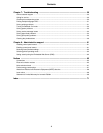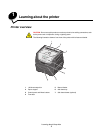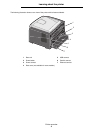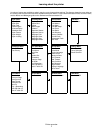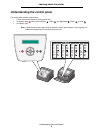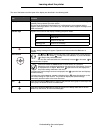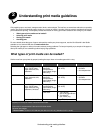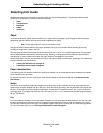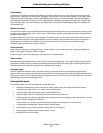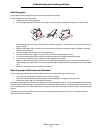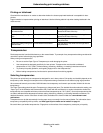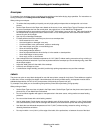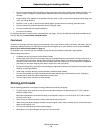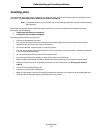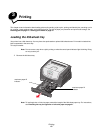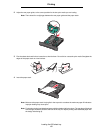
Selecting print media
12
Understanding print media guidelines
Smoothness
The degree of smoothness of paper directly affects print quality. If the paper is too rough, the toner does not fuse to the
paper properly, resulting in poor print quality. If the paper is too smooth, it can cause paper feeding or print quality issues.
Smoothness needs to be between 100 and 300 Sheffield points; however, smoothness between 150 and 250 Sheffield
points produces the best print quality. If you are using paper with a Sheffield point greater than 350 points, change Paper
Type to Rough Cotton. For more information, see “Paper Menu” in the Menus and Messages guide on the Software and
Documentation CD.
Moisture content
The amount of moisture in the paper affects both print quality and the ability of the printer to feed the paper properly. Leave
the paper in its original wrapper until it is time to use it. This limits the exposure of the paper to moisture changes that can
degrade its performance.
Condition paper while it is still in the original wrapper. To condition it, store it in the same environment as the printer for 24
to 48 hours before printing to let the paper stabilize in the new conditions. Extend the time several days if the storage or
transportation environment is very different from the printer environment. Thick paper may also require a longer
conditioning period because of the mass of material.
Grain direction
Grain refers to the alignment of the paper fibers in a sheet of paper. Grain is either grain long, running the length of the
paper, or grain short, running the width of the paper.
For 60 to 90 g/m
2
(16 to 24 lb bond) paper, grain long fibers are recommended.
Fiber content
Most high-quality xerographic paper is made from 100% chemically pulped wood. This content provides the paper with a
high degree of stability resulting in fewer paper feeding problems and better print quality. Paper containing fibers such as
cotton possesses characteristics that can result in degraded paper handling.
Recycled paper
Lexmark supportsUS executive order 13101 which strongly encourages the use of recycled papers in government
agencies. Ask for warranty information and performance claims from your paper supplier, and/or test small quantities before
buying large amounts. A list of suppliers and approved papers used by the US Government Printing Office can be found at
http://www.gpo.gov/qualitycontrol/cpypaper.htm.
Unacceptable paper
The following papers are not recommended for use with the printer:
• Chemically treated papers used to make copies without carbon paper, also known as carbonless papers,
carbonless copy paper (CCP), or no carbon required (NCR) paper
• Preprinted papers with chemicals that may contaminate the printer
• Preprinted papers that can be affected by the temperature in the printer fuser
• Preprinted papers that require a registration (the precise print location on the page) greater than ±0.09 in., such as
optical character recognition (OCR) forms
In some cases, you can adjust registration with your program to successfully print on these forms.
• Coated papers (erasable bond), synthetic papers, thermal papers
• Rough-edged, rough or heavily textured surface papers or curled papers
• Recycled paper having a weight less than 60 g/m
2
(16 lb)
• Multiple-part forms or documents



